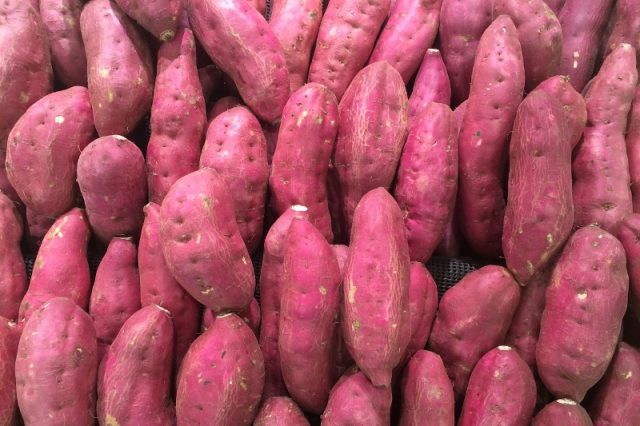[ad_1]

The Division of Science and Expertise not too long ago knowledgeable Filipinos that the English translation of the favored crop “kamote” is “sweetpotato.”
Filipinos, nonetheless, disagreed with how the phrase is spelled.
In a submit on February 5, DOST’s Philippine Council for Agriculture, Aquatic and Pure Sources (DOST-PCAARRD) suggested that the English translation of the plant is written as “sweetpotato” and never “candy potato.”
It additionally stated that the crop has been amongst its staples or topics for analysis and growth.
“Kamote is sweetpotato!” DOST-PCAARRD stated.
“This common Pinoy crop has been one in every of DOST-PCAARRD’s analysis and growth staples. Examine outcomes on this had been revealed and are made out there by way of the PCAARRD eLibrary,” it added.
Publications about candy potatoes might be seen on the company’s personal eLibrary.
To make use of the platform, customers can watch a brief video clip on how you can entry it free of charge on this hyperlink.
The social media submit quickly gained traction with 2,800 reactions and a pair of,500 shares on Fb.
A lot of the reactions had been additionally optimistic with 1,100 likes, 903 shock emojis and 747 coronary heart emojis.
Some Filipinos, nonetheless, countered this data.
They cited Google, Merriam-Webster and on-line dictionaries as among the many references that prescribe the time period “candy potatoes” as two phrases.
“Tried to Google it sweetpotato with no area however nonetheless the outcome there’s area. Sino ba mas tama si Google po ba mali?” a Fb requested.
“Merriam-Webster, Collins, Lexico by Oxford, Oxford Learner’s, and Britannica disagree,” one other Fb consumer commented.
Should you sort “sweetpotato” on Google’s search bar, it gives you outcomes of the time period spelled with an area in-between.
The web page may also ask you in case you are referring to the traditional candy potato.

Among the publications of DOST are spelled “candy potato” and “sweetpotato.”
One Fb consumer defined that each spelling types are appropriate.
“Each phrases are appropriate although. It’s solely a matter of favor or desire. As one commented right here, some organizations (usually associated to the crop) promote the phrase ‘sweetpotato’ however mainstream English (esp. or at the least American English) prefers ‘candy potato’,” the consumer stated.
One other consumer identified that a corporation referred to as the Worldwide Potato Heart (CIP) additionally prefers to make use of the one-word model.
The CIP is a Peru-based analysis growth heart that focuses on potatoes, candy potatoes and andean roots and tubers.
“DOST-PCAARRD is correct. That is in keeping with the Worldwide Potato Heart,” the net consumer stated.
On its web site, the CIP defined that the single-word time period for kamote is used to distinguish the plant from the Irish potato.
“Utilizing the single-word time period helps differentiate the sweetpotato from the white or Irish potato, which is a tuber, not a root, and which possess a unique nutrient profile,” the CIP stated.
It additionally confused the necessity to differentiate candy potatoes from yams.
“Differentiation additionally issues in the case of separating sweetpotato from yams, one other vegetable with which it’s generally confused. Aren’t sweetpotatoes synonymous with ‘yams’? Aren’t all roots and tubers with orange- or red-colored coloured flesh genetically associated? Certainly they aren’t,” the CIP stated.
[ad_2]
Source link

















